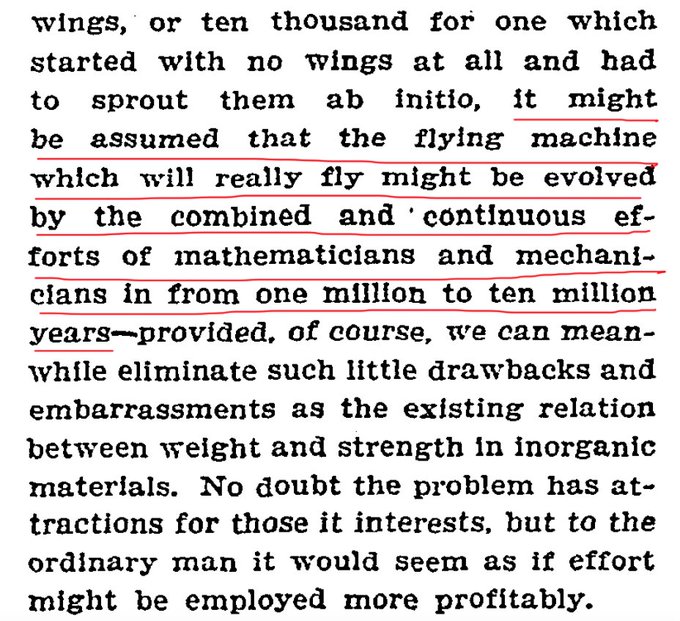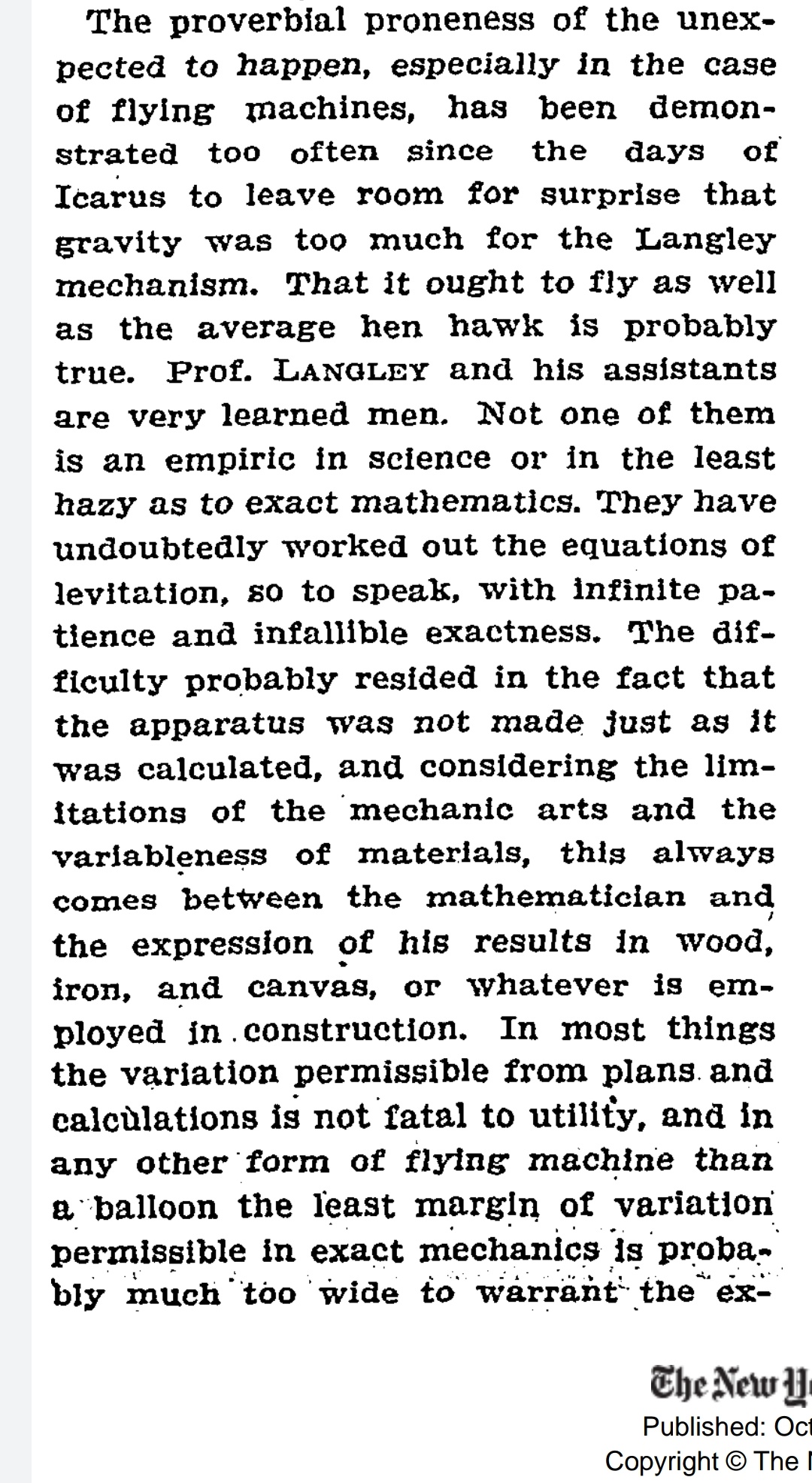Science and Scidolatry
Dr. Saifedean Ammous is Assistant Professor of Economics at the Lebanese American University, and author of The Bitcoin Standard.
A wag on Twitter yammerheaded the following tidbit of halfwittery:
“If you think you don’t trust scientists, you’re mistaken. You trust scientists in a million different ways every time you step on a plane, or for that matter turn on your tap or open a can of beans. The fact that you’re unaware of this doesn’t mean it’s not so.”
In reply to this, Dr. Ammous points out that practical wisdom is born of hands-on experience.
The Wright brothers and a century of airplane builders were engineers. Scientists first dismissed flight as impossible even after it happened, then made up a bunch of irrelevant equations to pretend to explain how it happened.
Everything that matters to our modern life was built by engineers and workers who got their hands dirty. Scientists sat in cushy universities writing textbooks after the fact indoctrinating generations to think it was their post-hoc explanations that built things.
Lord Kelvin was one of the world’s most important scientists when airplanes were invented. This is what he thought:
“I have not the smallest molecule of faith in aerial navigation other than ballooning, or of the expectation of good results from any of the trials we heard of.”
Astronomer and polymath Simon Newcomb in 1903:
“Aerial flight is one of that class of problems with which man will never be able to cope.”
This was the same year in which the Wright Brothers, two bicycle shop owner high school dropouts, built the first working airplane.
The New York Times had already smugly DEBUNKED the possibility of the airplane ever existing, exactly two months before two high school dropout bike mechanics invented it. WHY WON’T THE WRIGHT BROTHERS TRUST THE SCIENCE!?
Three years after the Wright Brothers flew, The London Times dismissed their claims of flight as fake, and was instead writing:
“All attempts at artificial aviation are not only dangerous to human life, but foredoomed to failure from the engineering standpoint.”
The first commercial steam engine was invented by Simon Newcomen, a barely literate ironmonger who had never come in contact with a scientist. James Watt was a technician, not a scientist, and explicitly denied that any scientific theories influenced his invention.
The scientific method is practiced by engineers building things, experimenting to see what works. Professional science consists mostly of nerds quibbling over each other’s irrelevant papers and agreeing they all need more funding.
Nothing in science needs trust. I don’t trust anyone to get in an airplane. I look at the track record of airplanes and decide the risks are acceptable given the benefits. “Trust science” is how you end up with billions of lives destroyed over virus hysteria.
*** *** ***
For the record, here are the clips from the New York Times, which I reproduce in part:


My comment:
Please note that this article concerned the disastrous attempt of Langley, a theoretical scientist, funded by the taxpayer, to launch his flying machine on an expensive ramp over a lake.
Being a scientist, he apparently did not know about the square-cube law, and scaled up his working model to a size to carry a man, without adjusting for the differences in wing area versus weight between that and his working model.
For those of you unfamiliar with the square-cube law, if you double the height of a cube, its volume and mass would increase eightfold, but its ability to support that mass, that is, its cross sectional area, only increases fourfold. That is why spiders large as elephants would actually need legs like elephants, or why a shrew tossed out of an airplane without a parachute can nonetheless parachute to the ground and walk away from the landing.
So of course the Langley monstrosity collapsed. That is what government funded research gets you. However, airbase named after him a two hour drive from my house.
The Wright Brothers used their own money to buy a few two-by-fours for a dollar as their launch ramp. Free enterprise.
Please note that the Wright Brothers also produced the flying machine within the same calendar year the New York Times were predicting a one million to ten million years interval needed to solve the intricacies of the mechanical problems involved.
And, also for the record, on January 13, 1920, the New York Times published an editorial insisting that a rocket couldn’t possibly work in space, sneering at Goddard in passing.
The story is in reference to Goddard announcing the theoretical possibility of launching a moonrocket filled with enough explosive that, upon impact, the flash might be seen from telescopes on Earth. How powerful were those scopes then? Edwin Hubble used the largest telescope of his day in the 1920s at the Mt. Wilson Observatory to discover that distance nebulas were galaxies like our own.

Please note the particular tone of jejune ironic superciliousness as they correct both rocket scientist and science fiction writer on the Newtonian Law of action and reaction, and explain that rockets will not work beyond the atmosphere, if there is no air to push against. Note the jaunty way Einstein’s name is dropped to show how very scientifically scientiferiffic is the New York Times.
The New York Times will believe in a moonrocket when it is done, and the flare of the explosion is seen by telescope, not before. Seventeen years prior, they predicted between one million to ten million years before heavier than air flying machines would fly.
Well, I will believe in honesty from the press when it is done. Perhaps in one million to ten million years the newspaper will evolve into an instrument to carry news and information, rather than the opposite.
